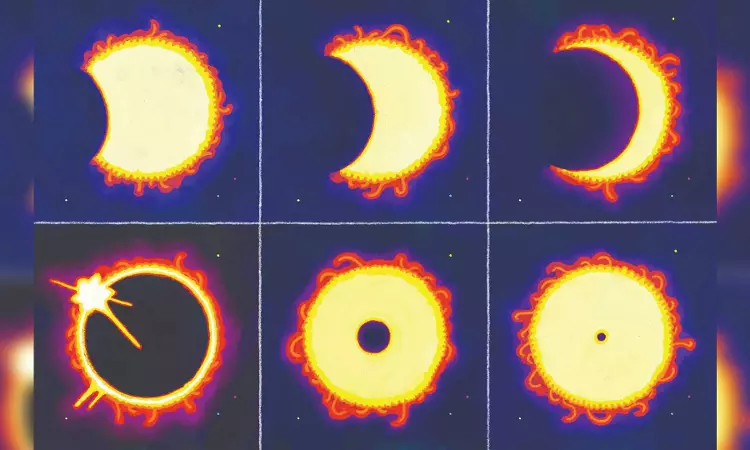Cosmic Event: Someday, Earth will have a final total solar eclipse
Ever since the moon formed over four billion years ago, it has been spiralling away from Earth

Solar eclipse
The total solar eclipse visible on Monday over parts of Mexico, the United States and Canada was a perfect confluence of the sun and the moon in the sky. But it’s also the kind of event that comes with an expiration date: At some point in the distant future, Earth will experience its last total solar eclipse. That’s because the moon is drifting away from Earth, so our nearest celestial neighbour will one day, millions or even billions of years in the future, appear too small in the sky to completely obscure the sun.
“We’ll only ever have annular eclipses,” said Noah Petro, a planetary scientist at NASA Goddard Space Flight Center, referring to “ring of fire” eclipses like the one that crossed the Americas in October. But putting an exact date on Earth’s final total solar eclipse is a serious computational challenge involving a variety of scientific disciplines.
Ever since the moon formed over four billion years ago, it has been spiralling away from Earth. The moon’s retreat results from its gravitational interactions with our planet. Tides raised by that gravity send the water in our planet’s oceans sliding over the seafloor and along the edges of continents. That creates friction that causes Earth to spin more slowly on its axis, said Mattias Green, an ocean scientist at Bangor University in Wales.
The moon moves outward in its orbit in response to the slowing of the Earth. Imagine a figure skater extending her arms and slowing down, Dr. Green said. “It’s the same physical principle but backwards.” One of the first people to predict the expanding orbit of the moon was George Darwin, one of Charles Darwin’s sons. But his hypothesis, published in 1879, would not be verified until American astronauts and Soviet robotic rovers left devices known as retro-reflectors on the moon’s surface. Researchers could fire laser pulses at mirrors on those suitcase-size instruments and time how long it took the light to make a round trip. That gave scientists a way of precisely measuring the distance to the moon. By the early 1970s, researchers had discovered that the moon was receding from Earth by about 1.5 inches each year.
That’s about the rate at which human fingernails grow. “We’re dealing with extremely small changes,” said Robert Tyler, a planetary scientist at NASA Goddard Space Flight Center.
But over hundreds of millions of years, the moon will become perceptibly smaller in the sky as it grows more distant. At some point, it will appear too small to completely blot out the sun, and total solar eclipses will become a thing of the past.
To calculate the date of the last total solar eclipse, it is important to remember that both the moon’s orbit around the Earth and Earth’s orbit around the sun are elliptical. That means that the distances between Earth and the moon and between Earth and the Sun are not constant. The apparent sizes of the moon and the sun as seen from Earth vary accordingly; the largest- and smallest-looking moons differ in size by about 14 percent, while the corresponding difference for the sun is about 3 percent.



